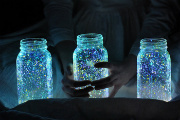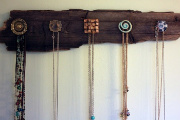Whether it's in the school cafeteria or at a family picnic, there are few people who haven't eaten Jell-O. There's something about the way it jiggles that makes it fun to play with and fun to eat. It can also be molded into tons of different shapes. But how does turn from a liquid into a wobbly treat? Read on for the scoop!
The Ingredients
Jell-O has five basic ingredients: gelatin, water, sugar, artificial flavors and food coloring. It's the gelatin that makes Jell-O hold its shape. Gelatin is processed protein, called collagen, which is found in most animals.
Putting the Moo in Glue
The gelatin in Jell-O is made from the collagen in cow or pig bones and skins. Contrary to popular opinion, hooves and horns aren't often used to make gelatin. Manufacturers grind up these animal parts and use acid, and alkali chemical processes to break down the cellular structures and release the collagen. Next, the mixture is boiled. The stuff that forms a layer on top is gelatin.
The Nuts and Bolts of Gelatin
Gelatin has a structure similar to DNA. With DNA there are two chains (called nucleotides) that twist together in a spiral (known as a double-helix). Gelatin protein has three separate chains (called amino acids) that twist around each other. These chains are held together by weak bonds that form between the amino acids.
Making the Quaking
When you add the flavor and gelatin mixture to boiling water, the powder dissolves and the weak bonds that hold together the protein chains break apart. The chains float around free and loose in your mixing bowl until you add cold water and put the mixture in the fridge. As it cools, the chains start bonding again. The chains become tangled when they are stirred, and water gets into gaps between the chains. The gelatin "chains" and the trapped water and flavor are what make Jell-O wiggle.
Related Stories:

































